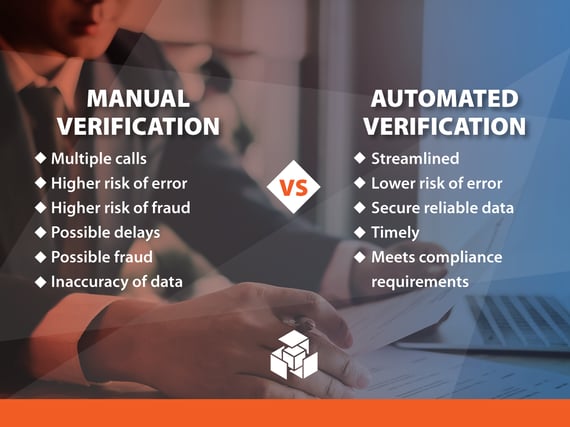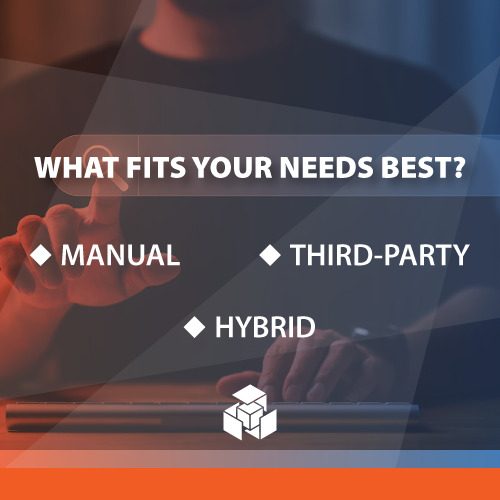Maximize Your Existing VOA for Seamless 10-Day VOE with AccountChek®
Reducing borrower friction while maintaining compliance is a constant challenge. Lenders are under pressure to move faster, keep costs down, and...

Following the financial crisis of 2008, U.S. policymakers developed new laws and regulations meant to prevent another economic disaster. One of the more consequential laws passed by Congress was the Dodd-Frank Wall Street and Consumer Protection Act of 2010. The bill included hundreds of pages of new regulations and the creation of, among several new agencies, the Consumer Financial Protection Bureau (CFPB). In short, the bill aimed to protect consumers from the excesses of the financial industry by adding many new layers of oversight and enforcement.
One of the more critical mortgage-related provisions of the law was the creation of the Ability-to-Repay rule, which, according to the CFPB, "requires a creditor to make a reasonable, good-faith determination of a consumer's ability to repay a residential mortgage loan according to its terms."
Before implementation of the rule, lenders and investors were not required to verify and document employment for prospective borrowers. Post-Dodd-Frank, lenders must more thoroughly vet borrowers, ensuring the borrower has the capacity to meet their monthly mortgage obligation.
Verifying employment is a crucial step in determining a borrower's creditworthiness, reducing fraud risk, and ensuring that the loan will perform, where the loan is retained in the originator's portfolio or sold to an investor.
The employment verification process can be accomplished either by an in-house/outsourced manual process or by an authorized third-party data solutions system (more on that later).
Once the borrower is ready to move forward with a loan, they’re required to provide their lender with their employment history and information, including contact info along with supporting employment/income documents like W-2 forms, pay stubs, bank statements, and other financial documents.
Once the loan enters the underwriting stage, processors now take more substantive steps to verify details and information, including the borrower’s employment situation.
Suppose the lender employs an in-house manual VOE process. In that case, a processor will be required to place a call to the HR department of the borrower’s employer to confirm the information provided in the application. The process can be quick and straightforward if the processor reaches the right person quickly; however, if the phone number provided is incorrect or if unable to contact the proper HR representative immediately, the timeline for verification could extend to a week or more. The process requires both a competent processor and a responsive employer.
When utilizing this in-house method, lenders must consider several vital risks, including human error and fraud. Manual VOE requires the lender to fully document the verification, which a busy or sloppy processor could overlook.
Additionally, loan processing may be delayed or even endangered if employees tasked with verifying employment call the wrong number, commit errors in transcribing information, or even forget to call altogether. Manual processes are also limited by the work hours of the borrower’s employer and the availability of the authorized HR representative. If they happen to be on vacation, at a company retreat or attending an industry conference, that could delay verification. Even if solid processes are in place, staff turnover may make retaining and passing on knowledge and skills challenging.
The lender is also vulnerable to fraud, as unscrupulous borrowers can create fictitious company names, complete with working phone numbers that appear to be legitimate. In fact, Fannie Mae’s Mortgage Fraud Trends Report revealed that half of all fraud findings involved potentially fraudulent income and/or assets. That same report also noted a growing number of fake employers even had listings in yellowpages.com or other professional reference services. An unsuspecting underwriter or processor may have difficulty validating the authenticity of the employer without extensive research, costing more time (and money). Research may include Google search, 411.com, or searching through the Better Business Bureau or available state licensing databases.
On the other hand, if the lender utilizes an automated or third-party system, the process can be much more streamlined, automated, quick and (relatively) painless. A vendor approach to performing VOE is an excellent example of leveraging mortgage technology to handle simple tasks instead of human labor, thus freeing up the lender employee to focus on more troublesome or challenging files or resolve more pressing customer service issues.
Third-party VOE providers receive updated payroll information directly from the employee’s HR/payroll departments. This data is reposed in secure databases and is updated each time the employer runs payroll. The data contains most, or all, of the data found on an employee’s paystub including such items as gross and net pay and deductions. Additional information related to the employee is also available such as start date, employment status and other data that are relevant to the employee’s position within the company.
Since this data is updated each time payroll is run, usually weekly or bi-weekly, the data can be incorporated into the loan file without delays or errors that must be corrected later.

There are many third-party verification providers available, which include the following (in alphabetical order).
The benefits of utilizing these automated services are clear. Verified providers can receive a request from a lender 24 hours a day/7 days a week, meet complicated (and costly) state/federal compliance requirements, provide instant (or near-instant) results, and supply all relevant and necessary information payroll data, provided securely by the employer. Additionally, they may service batch requests and provide more data than just a simple verification of employment, further accelerating efficiencies and shortening closing times.
One common wrinkle/challenge in employment verification is working with a self-employed borrower. It is estimated that as many as 14.9 million Americans are self-employed, a sizeable chunk of the mortgage market. In this case, lenders may require borrowers to provide an Internal Revenue Service (IRS) Form 4506-T, which requests a transcript of their tax return. Having this document on hand allows the mortgage lender to get a copy of the borrower’s tax returns directly from the IRS. As an alternative to Form 4506-T, lender reps may request a CPA to verify income. Lenders may also request regulatory filings or check licensing bureau databases.
For so-called “gig economy” workers, verification of employment through an outsourced provider might be critical, as employment situations may be layered and may change rapidly, putting a premium on up-to-date information.
Before making a switch from an in-house process to an outsourced or third-party VOE service, there are a host of questions lenders should ask of a prospective partner, including:

Verification of employment is crucial for the modern mortgage’s underwriting and loan processing/approval stage. Making that process seamless, cost-effective, and providing managers with the opportunity to maximize the use of employees’ time is reason enough to carefully consider how your company designs its processes and if outsourcing is the best fit.
A perfect scenario might involve a careful balance (or a “waterfall” approach) between the two methods, with a manual verification backing up the third-party-provided data. For instance, your processor pulls the records instantly for applicants when the data is available from a third-party provider and manually verifies employment directly with an HR department when the applicant’s employer does not contribute its payroll data to a verification services provider.
Beyond these considerations, remember that this is now a required part of the mortgage process, thanks to the Dodd-Frank Act. VOE is an important way to protect consumers, lenders, and investors from both fraud and excess risk.
Click to learn more about our Verification Waterfall
The right partner makes all the difference. With IR, you gain smarter credit and verification solutions, a team that has your back, and a strategy that grows with you.
/Blogs/2025%20Blog%20Posts/2025-09-Maximize%20Your%20Existing%20VOA%20Connection/IR_Blog-Understanding-the-cost-of-tax-transcript-retrieval.png)
Reducing borrower friction while maintaining compliance is a constant challenge. Lenders are under pressure to move faster, keep costs down, and...
/Blogs/2025%20Blog%20Posts/2025-08%20HW%20Vanguard%20Matt%20Orlando/HW-Vanguards-2025--Matt-Orlando.png)
GARDEN GROVE, Calif., September 2, 2025 — Informative Research (IR), a leading technology provider of data-driven credit and verification solutions...
/Blogs/2025%20Blog%20Posts/2025-08%20Lending%20Tech%20Titan/Blog_Award_2025-Lending-tech-titian-IT.png)
GARDEN GROVE, Calif., August 19, 2025 — Informative Research (IR), a leading technology provider of data-driven credit and verification solutions...